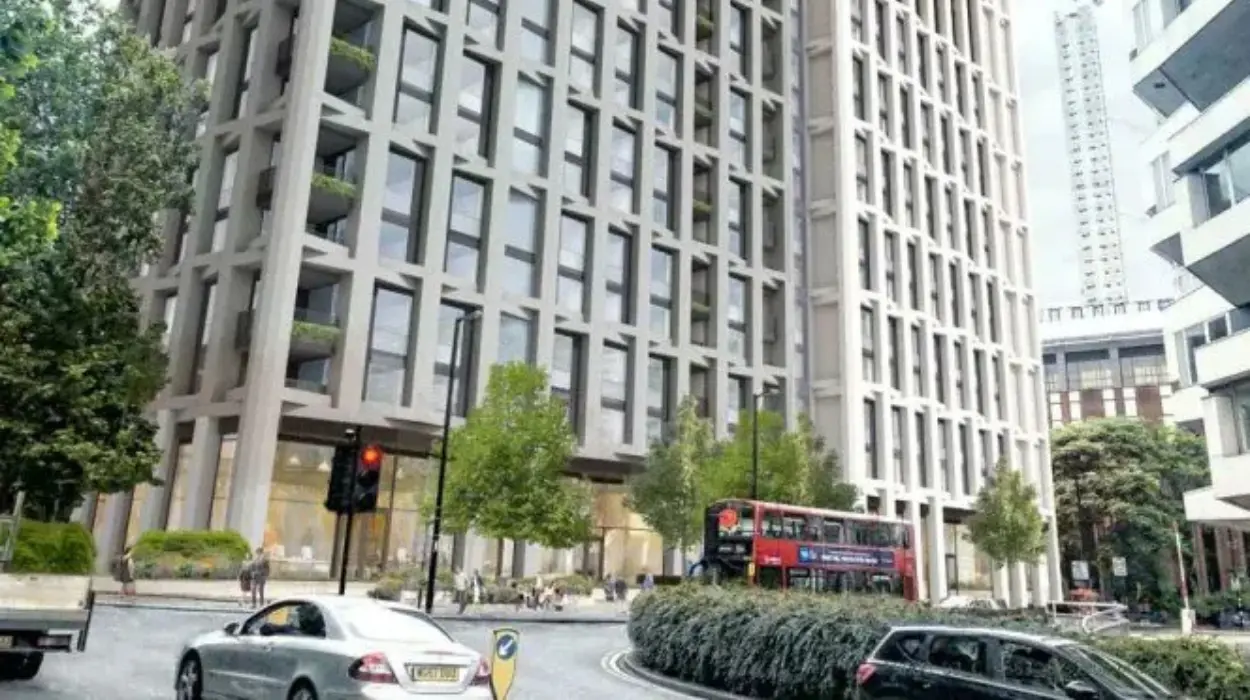Croydon (Parliament Politics Magazine) – A £210 million property deal will bring 569 new flats to East Croydon, marking a major step in the area’s ongoing residential and urban development plans.
Mayor Perry praised a 28-story tower in the town center that the planners for his own council attempted to prohibit because it was too tall.
Following the completion of a significant real estate transaction in Croydon town center, real estate speculators Cheyne Capital have announced that they are moving on with a plan to construct hundreds of apartments on the site of City Link House.
According to housing industry insiders, the vacant office complex site across from East Croydon Station was purchased for £210 million, which is at the upper end of its price range.
Planning approval has been granted for 84 affordable dwellings and 485 “co-living units” spread across a 14-story block and a 28-story tower.
According to Jason Perry, the Tory mayor of Croydon, this is a positive thing and is “fantastic.”
Perry neglected to disclose that the planners for his own council had initially denied the proposed tower because they believed it would dwarf and overshadow the iconic No1 Croydon building across Addiscombe Road.
Wittington Investments, the original developers, prevailed in their appeal to the Planning Inspector.
“A positive step forward in providing new housing options, creating jobs, and enhancing local amenities,”
said Perry, a part-time employee and director of the Croydon Business Improvement District.
“I am looking forward to the positive impact this will have on our community,”
he continued.
As Perry waves through hundreds of new private apartments, he can see profit-driven private developers smiling all the way to the bank. If Westfield ever does begin construction on the Whitgift Centre site, there will be thousands more.
Customers may find it more difficult to locate or contact local companies due to construction barriers and changed traffic patterns, which could affect day-to-day operations.
Local infrastructure and services may be strained by the growing population, which could have an indirect impact on consumer experiences and business settings.
Following growth, smaller or independent firms may face pressure from rising property values and rents, which could result in closures or displacement.
It’s difficult to tell if Perry is exhibiting Newmanesque levels of hypocrisy or if he has forgotten that his planning department disapproved of this idea.
In any case, the hundreds of apartments in a private building in East Croydon are unlikely to help shorten Croydon’s municipal housing waiting list at a time when the housing crisis is plunging Perry’s council into yet another financial catastrophe.
According to data from the authority, Croydon delivered 204 new council houses at social rent in the two full years prior to Mayor Perry taking over at Town Hall.
Croydon only produced 29 new council homes in 2023 and 2024, the two years since Perry took office, which contributed to the demand for exorbitant rabbit hutch “apartments.”
A press statement from Cheyne Capital states that their tall residential tower block will have a recording studio, a movie theater, a games room, and a gym and “wellness suite.”
Although the tiny apartments will have private toilets and kitchenettes, occupants will share the building’s kitchens and other common areas.
Matt Floyd, at Cheyne Real Estate, said:
“We are proud to support a project which can play a role in furthering the regeneration of Croydon, and will contribute to its vibrant business and living community.”
Get that: “furthering the regeneration of Croydon.
This project reflects Cheyne Capital’s continued commitment to the UK flexible-living sector.” Ahhh, that well-known “commitment to the UK flexible-living sector”.
Cheyne has previously been involved with Ark Canary Wharf and Taxi House in central London.
How will the new development impact local businesses in Croydon?
Sales and economic activity will increase as a result of the influx of new residents, particularly as 569 apartments with co-living units would increase the number of prospective customers visiting local businesses, eateries, and services.
Jobs will be created during and after the development’s construction and operation, boosting local employment and assisting ancillary industries including retail, maintenance, and suppliers.
The project is a component of larger revitalization initiatives that frequently incorporate transportation and public space enhancements, increasing the area’s appeal to both businesses and consumers.
Building projects frequently encourage cooperation between developers and nearby companies, opening doors for supply chain involvement and cross-promotion.
Existing businesses nearby may see a decline in foot traffic as a result of noise, dust, road closures, and parking restrictions that limit accessibility and turn off customers.


